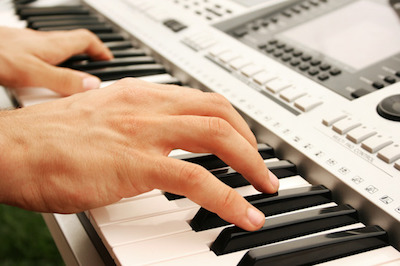People usually fall into playing the piano in one of two ways.
1. Their parents sign them up when they’re small, encouraging them to try something new.
2. It’s been a lifetime dream. At some point, a person has a little extra free time, and they make playing the piano a priority.
No matter what brought you here today, you’re in a good place. Creating music is a lifelong skill that one can enjoy from 2 to 102. 
But before you can start practicing music and begin to put notes together to create a song, there are a few steps you have to do first. The first is to understand the differences in pianos.
When most people think of the term “piano,” they think of the old piano sitting in their grandmother’s home, or they think of the inexpensive keyboard they see in the big box store around the holidays.
In most cases, we don’t think about pianos because you rarely see them for sale where you shop. If you do, it’s sitting by itself as a “gift idea’ on the store shelves, in between the other items that supposedly make music. You know, the guitars and the karaoke machines.
Maybe that’s why we lump the concept of pianos and keyboards together, when in fact they are two separate things.
A piano can refer to many different types of instrument. A piano in its traditional sense is either upright or grand. It is built out of wood, plastic and strings. In order to produce sound, the key is pressed which triggers a hammer to hit a string, which in turn produces sound.
A digital piano produces sound through replication. Instead of making music through the action of pressing the keys to trigger the hammer to connect with strings, the sound is recorded and installed into the digital piano. When you press a key, you hear the recorded sound. In most cases, the better the piano, the better the sound.
When people refer to an instrument like a keyboard, it can take on one of two applications. The cheap instruments you usually find in your favorite big box store around the holidays is often referred to as a keyboard. And other than looking like a keyboard, it does little to act like one. These instruments rarely have weighted keys to imitate true piano playing skills. This is vital to becoming a good piano player. They also have poor sound quality, something a player can pick up on fairly quickly.
If you can’t produce the sound you’re looking for, why play at all?
This is why most keyboard players give up.
If you want to learn to play the real thing, the best place to start is by investing in real equipment. That means purchasing a real piano. Acoustic or digital is fine. What matters most is the quality.
And if you have questions, we’re here to help.

